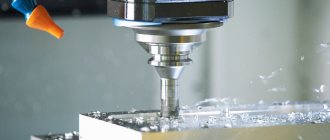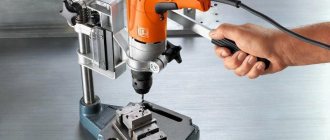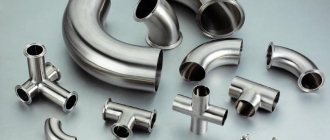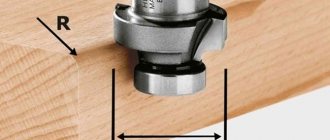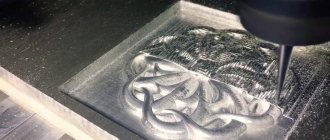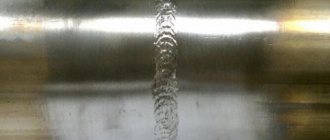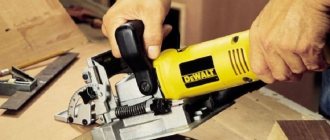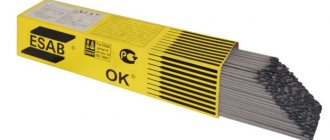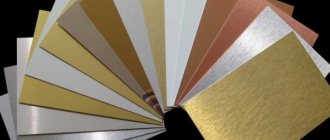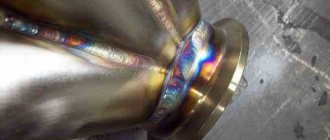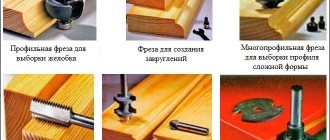Corrosion-resistant steels are materials that are characterized by difficulty in cutting, including milling. Therefore, for each group of stainless steels, optimal technological modes and cutting tools for milling machines are determined to increase the productivity of the processing process.
Stainless steel milling: main problems
In what way does the material show its complex character during milling of stainless steel?
Firstly
, during its processing, the so-called hardening is formed - a consequence of independent strengthening in the process of mechanical action. The hardened layer that appears at the cutting site interferes with further operation of the tool. The formation of work hardening is often the result of an incorrectly selected or blunt tool.
Secondly
, stainless steel has reduced thermal conductivity. In processing, this is a factor with a “minus” sign, since the heat generated during the process is not distributed throughout the material, but is transferred to the tool. The result is rapid wear of the cutters.
Third
, cutters quickly fail not only under the influence of thermal processes, but also due to contact with a material of increased hardness.
Fourth
, waste generated during cutting sticks to the tool. This factor not only worsens the cutter edge, but also “forces” the tool to work with double effort.
And finally, fifthly
: chips during processing are poorly crushed into smaller elements. This is harmful for the workpiece, since burrs may appear in the area where it is turned.
Characteristics of stainless alloys that complicate milling
The process of cutting stainless steel blanks is complicated by the following material properties:
- Hardening (also known as self-hardening during deformation) - when the cutting edge is pressed onto the metal, the workpiece is deformed, and its hardness increases. Thus, when re-processing, it will be necessary to cut off a very durable layer. The cause of this phenomenon is most often an incorrectly selected or worn cutting tool.
- Low level of thermal conductivity, which makes it difficult to remove heat from the cutting site. As a result, the chips and the workpiece absorb a minimal amount of heat, and the remaining is redirected to the tool, thereby causing its premature wear.
- Increased hardness and optimized strength characteristics, which are provided by alloying components in the alloy (titanium, nickel additives, etc.). When processing such an alloy, the milling machine is subjected to particularly intense loads compared to cutting carbon steel products, which causes a loss of tool performance.
- Metal chips sticking to the edge of the cutting tool. This phenomenon causes a violation of the geometry of the workpiece and, as a result, an increase in the forces required during processing.
- Difficulty in crushing chips and the appearance of burrs on workpieces. This problem usually occurs when the tool is chosen incorrectly.
Milling steel and stainless steel
Unlike milling stainless steel, working with “black” rolled steel grades is not so difficult, but it also has its own peculiarities.
The choice of a specific technique depends on the type and amount of alloying components of the alloy. The main danger of processing low-carbon steels is the formation of burrs. The harder the material, the more difficult it is for chips to chip away from the working area, which we have already described using stainless steel as an example. It should be remembered that when performing simple operations, it is undesirable to use cutting fluids (coolants): this is a serious load on the material, which can cause its critical damage - cracking.
Stainless steel milling
In addition to the chemical composition, the quality of stainless steel milling can be influenced by the most insignificant, at first glance, factors:
- method of producing the workpiece (forging, stamping, casting, etc.);
- the presence of formations on the surface that impede the process: scales, crusts;
- cutting mode - for example, continuous or intermittent;
- presence or absence of heat treatment.
The value of CNC machines for milling lies not only in the high accuracy of operations, but also in the choice of the most effective method and processing mode, and, consequently, in increased productivity of operations.
Stainless steel milling
As noted in the previous article, the most common are austenitic stainless steels, chromium-nickel, such as 08Х18Н10Т and 12Х18Н10Т , containing chromium (Cr) and nickel (Ni) and it is precisely these that constitute the maximum difficulty in their machining.
Of course, the chemical composition of stainless steel has a strong influence and, accordingly, recommendations for one grade of steel may not be suitable for another. In addition, the method of producing workpieces (casting, stamping, forging, etc.), the presence of crust, scale, inclusions, processing conditions (intermittent cutting, etc.), as well as the presence of heat treatment, has a strong influence on the machinability. But some general recommendations can be given.
Stainless steel cutters: features
High-quality processing on CNC equipment requires the selection of good cutters.
To withstand mechanical and thermal wear, they must be made of carbide materials. Another requirement for a stainless steel cutter is the ability to work at a high angle of inclination. This contributes to the fastest and most “painless” chip removal process.
And finally, cutters for milling stainless steel must have a special coating that primarily protects the cutting edges from wear.
Machining stainless steel
Features of mechanical processing of stainless steel on a metal-cutting machine Stainless steel has a low machinability coefficient, which decreases as
Features of mechanical processing of stainless steel on a metal-cutting machine Stainless steel has a low machinability coefficient, which decreases depending on the increase in alloying elements nickel and titanium Characteristics of the structural and phase states of stainless steels 1) Austenite The most common type of stainless steel with increased anti-corrosion properties due to the high content of chromium and nickel. Has a low machinability factor. Used in the food industry. Example 12Х18Н10Т 08Х18Н10 03Х18Н11. 2) Ferrite stainless steel characterized by a high chromium content and the absence of nickel, which improves its machinability. Example 12X17 AISI 410 430 434. 3) Martensite-ferrite stainless steel which can be heat treated due to its high carbon content. Has reduced anti-corrosion properties. Used for the manufacture of parts of increased hardness (AISI 410 420 432). 4) Martensite stainless steel on a chromium-nickel base. It has high anti-corrosion properties, increased mechanical strength and hardness due to special heat treatment. Example AISI 17 15. 5) Austenite-ferrite stainless steel with higher heat resistance (about 2 times). Used in chemically active high-temperature environments. Example AISI S2304 2507. Features of processing stainless steel 1) Hardening (hardening) of the machined surface leading to an increase in cutting forces and a decrease in tool life. 2) Increased temperature in the cutting zone due to the low thermal conductivity of stainless steel which 3) Reduced quality of finishing due to the formation of a built-up edge on the front surface leading to adhesive 4) Chipping of the cutting edge and breakage caused by diffusion wear occurring at high temperatures as a result of the interaction of homogeneous elements of the workpiece workpieces and tools. General recommendations for processing stainless steel 1) Use a tool that provides improved heat removal from the cutting zone due to its thermal conductivity and geometry. 2) Use positive tool geometry, which helps reduce cutting forces and prevents 3) Select optimal cutting conditions. 4) Choose the optimal tool that provides high heat resistance, mechanical strength, hardness and a low coefficient of friction of the chips on the rake surface. 10 Classification of processed materials Recommendations and processing features General characteristics of stainless steel S Stainless steel has high anti-corrosion properties. High anti-corrosion properties are due to the presence of chromium-based alloying elements in it.
CNC milling of steel
CNC milling any steel is not only convenient and safe, but also very profitable. After all, the more manual labor involved in a particular technology, the higher the price for the service will be. In programmable machines, in which all operations are performed by an “electronic brain” and automation, the main costs of the customer are associated with energy costs and tool wear. Which, as a rule, are also low. The advantages of CNC machining of steel blanks include:
- minimal probability of marriage,
- high speed of work,
- unsurpassed quality result.
Features of stainless steel milling
The problems of stainless steel milling, which we discussed above, are not only not critical for CNC equipment, but can be solved quite easily.
For example, the use of cutters made of hard steels with sharp sharpening helps prevent tool overheating. They are not afraid of high temperatures, and they cut the material perfectly, preventing even the slightest deformation. It is on a CNC machine that you can set the optimal mode for a given workpiece: cutting depth, tool rotation speed, feed. Particular attention when milling, even while working on electronic equipment, should be paid to the composition and intensity of coolant supply. When working with stainless steel, the oil content in the liquid should be at least 8%: this minimizes the harmful load on the metal.
Cost of milling work on steel
Each company sets prices for stainless steel milling differently, based on costs. For some, it makes more sense to calculate the cost of services in standard hours. Others describe the types of work in price lists. The list of services may include or includes:
- development of drawings for milling,
- creation of 3D models of future parts,
- writing a control program,
- actual milling.
For different types of stainless steel, the cost of processing may differ slightly, but slightly: milling work on universal grades will be estimated cheaper than on materials of increased hardness.
Stainless steel milling: our advantages
If the quality of work is no less important to you than the opportunity to save money, you are in the right place.
With many years of experience in metal processing, we have been able to achieve significant reductions in production costs. This means we are ready to offer you the best prices for your budget. Our specialists work individually on any project, each time selecting the optimal tool and cutting mode. The meticulous creation of control programs and the use of special coolants allow you to mill stainless steel as accurately as possible and with a complete absence of risks for your workpieces. Contact us!
Technological techniques for optimizing milling of stainless steels
Effective ways to improve stainless steel milling:
- The use of sharply ground carbide cutters solves the problem of difficult heat removal. Firstly, such a tool effectively cuts rather than deforms the material, which reduces the amount of heat generated. Secondly, hard alloys tolerate high temperatures well without compromising performance or dramatically reducing service life.
- Selecting the optimal cutting mode for the workpiece on a milling machine. It should be taken into account that the larger the chip, the greater the amount of heat it can remove from the cutting zone. Therefore, for corrosion-resistant steels, the maximum possible cutting depth and significant feed are recommended. The limitations in increasing the depth of cut and feed are: the power of the machine, the strength of the workpiece material and the cutter itself. In addition, such intensive modes are not suitable for finishing machining, which involves small cutting depths and low feed rates.
The choice of suitable coolant is an important point that determines the productivity and quality of processing a stainless steel workpiece on a milling machine, as well as maintaining the operating parameters of the cutting tool. This process requires a liquid in which the percentage of oil is at least 8%. For other materials and technological operations, an indicator of 3-4% is sufficient. The pressure under which the coolant is supplied to the cutting zone also plays an important role. The higher it is, the more efficient the heat removal is. The best option is to use specialized systems designed for coolant supply.
